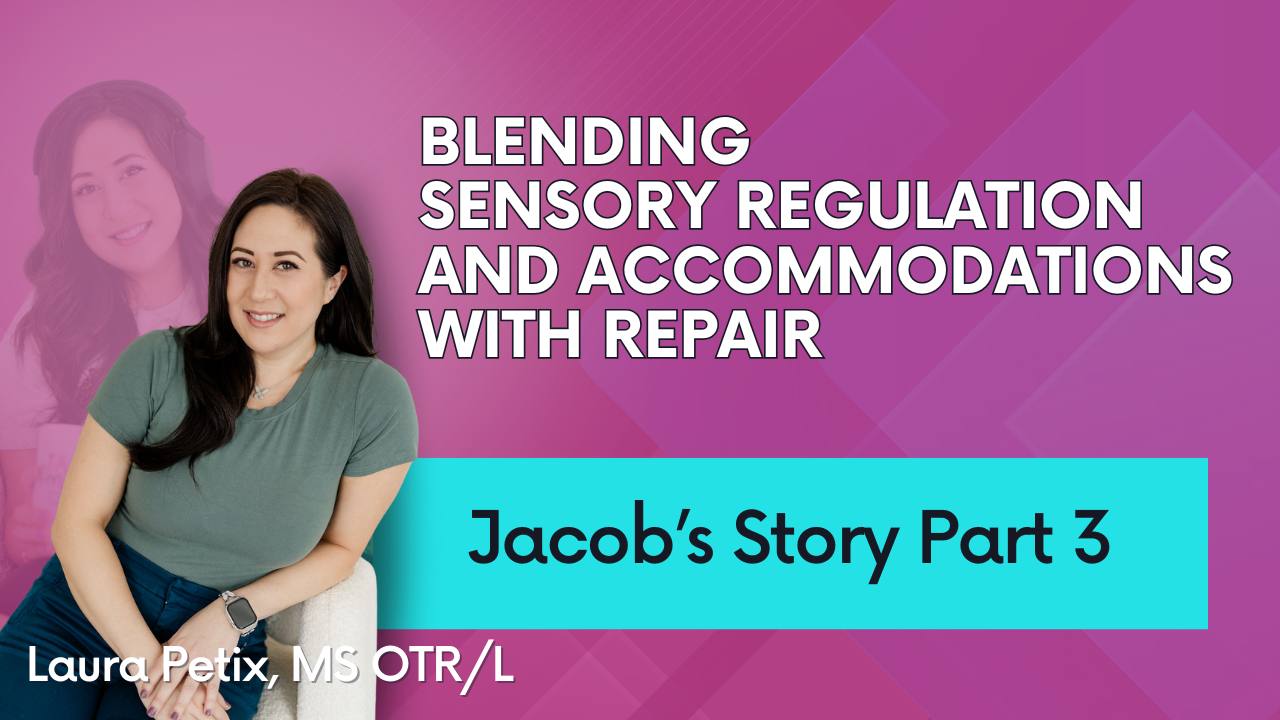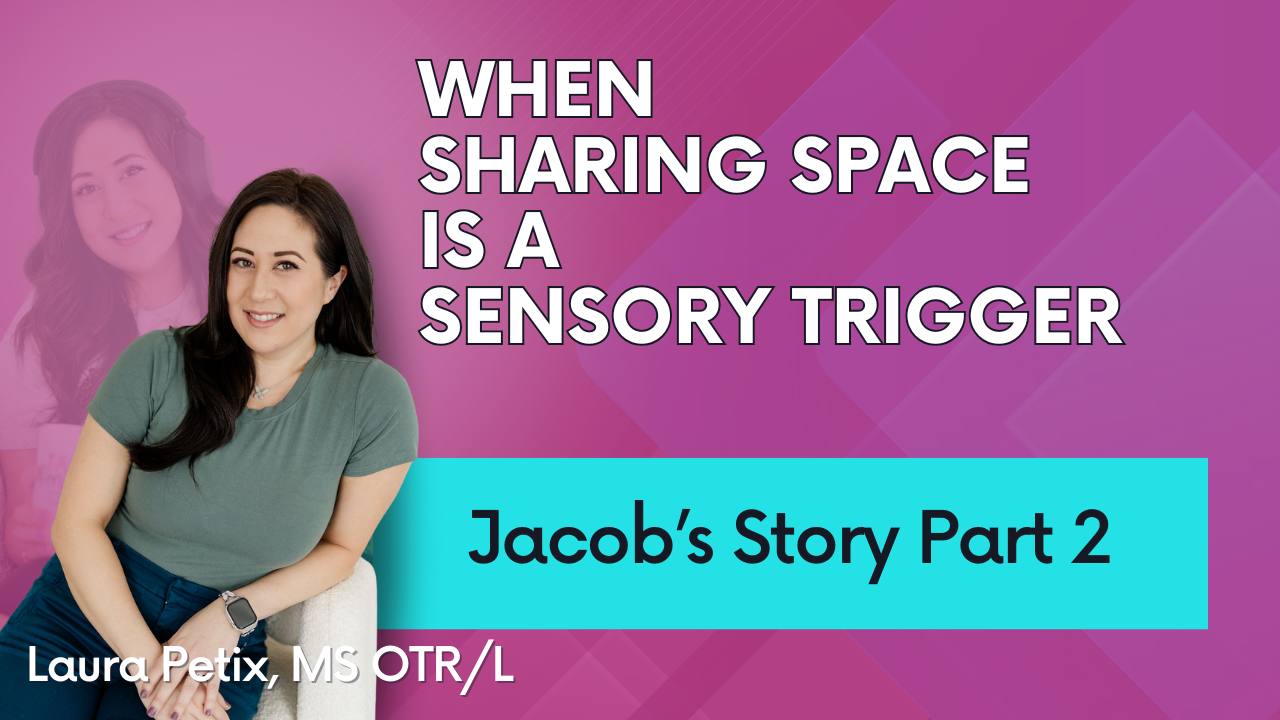His nervous system is screaming for more proprioception!

Last week I introduced you to Theo, an Autistic 4 year old boy who needed support with handling self-injurious stimming behaviors, elopement, understanding body awareness and personal space cues, and emotional dysregulation.
Click here to go to part 1 of Theo's story
Let’s continue learning about Theo’s regulation needs and ways to support them.
His nervous system is screaming for more proprioception!
Many of his behaviors (the chest pounding, grabbing/squeezing peers and biting) indicate that he has a high need or high threshold for proprioceptive input. Instead of constantly telling Theo “gentle hands”, or “no hitting”, we want to actively support and redirect his sensory-seeking behaviors by offering alternative ways to meet his needs.
Some effective solutions to try would include:
✅ Trialing a weighted or compression vest to provide the constant deep pressure that mimics a hug.
✅ A weighted lap pad or stuffy to carry around as a transition item into the classroom when he sees peers.
✅ Structured ‘heavy work’ jobs (e.g., pushing a weighted cart, carrying books) to provide proprioceptive input throughout his day at school.
✅ Body socks to offer full-body resistance that he can curl up into when feeling overwhelmed in the classroom.
Not only will these sensory supports provide him with the input his body craves, but it also provides additional “data points” to his brain to help strengthen his body awareness. Kids who have a high threshold for proprioception often struggle with knowing how much force or motion to put into their movements, which can create a lot of social conflict when getting too close to others.
Addressing Perfectionism & Emotional Dysregulation
Theo’s mother also shared that he tends to have big behaviors like throwing and screaming when his drawings or creations didn’t measure up to an expectation he had for himself. As a 4-year-old still learning foundational visual motor skills, these kinds of scenarios are hard to avoid, so we needed to come up with a plan to address this.
Here’s what we came up with:
✅ First, explore a few different safer options for throwing and other ways to lean into the big motions he was craving. We talked about: ripping up and crumpling recycled paper, throwing soft stuffies (like these emotional stress balls), or throwing ice cubes (outside).
✅ Then create a literal tool box (bin, box, bucket) with the items you decided to go with, and set up a craft or activity to work on.
✅Next, Theo’s mom will consistently offer short fine-motor crafts and drawings to allow Theo to put this all into practice. She’d first actually help him regulate his nervous system by proactively doing some heavy work and throwing or squeezing; then she’d remind him that these tools are ready for him to use when he needs it. Once they started the activity, as soon as she noticed his cues of dysregulation, she’d immediately redirect him to the bucket of tools instead of throwing other objects.
Don't worry, I'm not just suggesting random strategies based on how I would support these behaviors. I'm speaking from experience. I also struggled with helping my daughter get over perfectionism (still working on it). I remember I just swore off of all crafts and drawings for a while because they always ended in meltdowns.
Then I remembered that it didn't help her at all. Instead, I needed to help her become comfortable with being uncomfortable. I needed to let her sit in her feelings and make it out the other side, without distracting her from them. It was rough, but this was the best decision ever.
Next week, I’ll share the ideas and strategies we talked about to address his elopement behavior during recess and I’ll tell you something Theo said that made me so proud!

Continue learning from me:





Responses